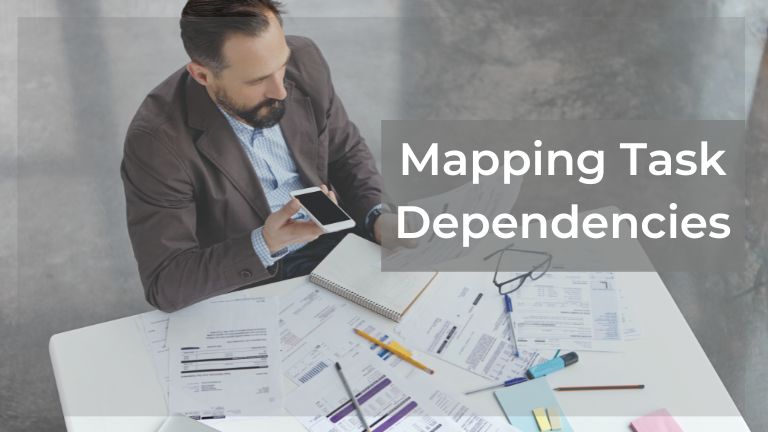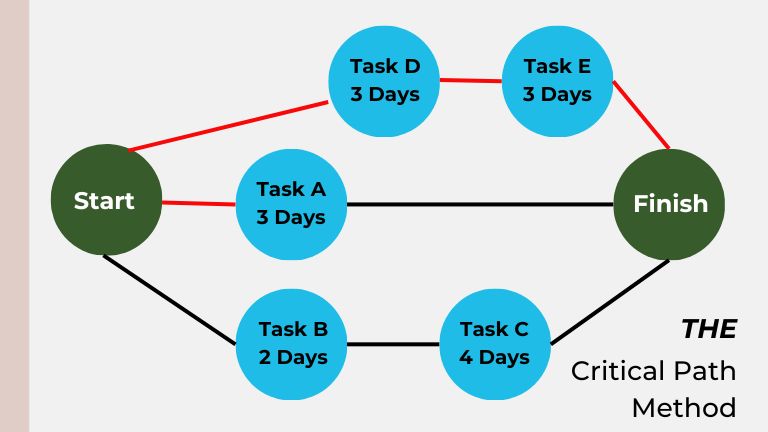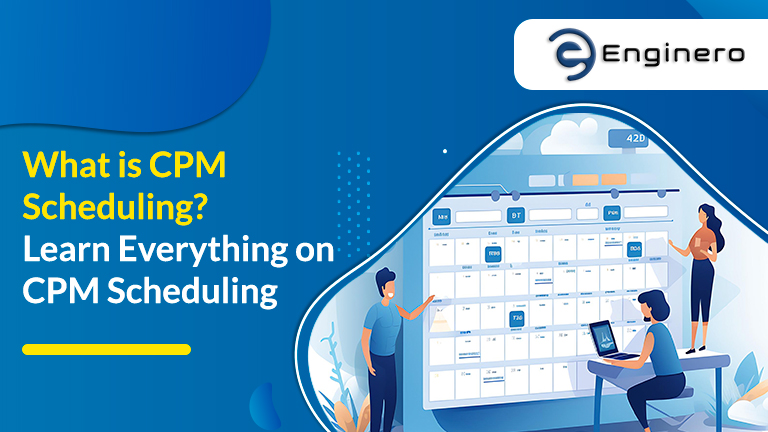CPM Scheduling is a systematic framework that enables project managers to manage complicated projects effectively and efficiently.
The Critical Path Method (CPM) is a project management approach that involves identifying tasks and steps that are vital to project completion.
This helps project managers calculate the timescale of each task and determine the interdependencies between them.
This approach aids in creating a schedule and workflow that ensures the project will be finished on time by linking these tasks in a network.
In this blog, you’ll learn about,
- Understanding CPM Scheduling
- Creating a CPM Schedule
- Advantages and Challenges in CPM Scheduling
- Overcoming Challenges with the Software
In this article, we delve into the intricate details of CPM scheduling, discovering its strategic nuances, precise benefits, and resource optimization aspects that collectively elevate project management to new heights of efficiency and timely completion.
Understanding CPM Scheduling

Critical Path Method (CPM) is one of the traditional methods in construction schedule management.
Not just a collection of guidelines, CPM is a systematic framework that enables project managers to manage complicated projects effectively and efficiently.
A CPM schedule offers a thorough outline of the project’s planning stages, including the beginning and ending dates of every task, the project’s overall duration, and the crucial tasks that must be finished on time to prevent the project from being delayed.
Using a CPM schedule, project managers can gain key insights into the project’s progress and identify potential interruptions or obstructions that need to be addressed to ensure the timely completion of the project.
Creating a CPM Schedule
Project managers must understand the project’s requirements and scope before drafting a CPM schedule
After getting those details, follow the below steps to create a robust CPM schedule, focusing on key steps of project management essentials that ensure precision and adaptability.
Identifying Activities and Tasks
CPM scheduling starts with a keen understanding of the project’s objectives and scope.
Initially, the project managers start identifying activities, breaking them down into multiple tasks and sub-tasks.
By doing this, you will gain a granular understanding of the project’s tasks.
Mapping Task Dependencies

Dependencies play a crucial role in the project scheduling.
Dependent tasks must be identified in order to avoid bottlenecks and discrepancies. Project managers must address the four dependency types:
Start-to-Finish,
Finish-to-Start,
Finish-to-Finish,
Start-to-Start.
After establishing these dependencies, you will get clarity on the tasks by guiding the project team on the most efficient way to proceed.
Sequencing Task Efficiently
Task sequencing is more or less the same as the process of making a flow diagram for project completion.
Sequencing the tasks is not just arranging your project’s tasks in a sequence; it also should optimize your project’s pace.
By selecting a suitable logical sequence, project managers can minimize delays and ensure a well-organized workflow.
Estimating Project Duration
Project managers should provide an estimate of the project completion duration to the stakeholders. Estimating duration is not governed by guidelines.
It depends on the historical data of similar projects, expert suggestions, and external influences such as resource availability, regulatory requirements, and weather conditions.
This step entails laying the framework for the project’s overall timeline by giving each task a reasonable time limit.
Building a CPM Network Diagram
The next step in CPM scheduling after identifying tasks, activities, dependencies, and project estimation is the creation of a CPM network diagram.
In this step, project managers will create a graphical presentation of the project’s activities based on their interrelated dependencies.
Establishing the Critical Path in CPM Scheduling
Once the CPM network diagram is created, you can identify a critical path.
The critical path is the longest duration from the beginning to the completion of a project.
It should be ensured that the tasks on the critical path should be free from slack which means the delays in the tasks should not impact the project on the project’s timeline.
After setting the critical path to your CPM network diagram, you can now schedule a project. With this, you can easily find out the critical and non-critical tasks involved in the project. Also, you have identified the simple tasks and the areas where bottlenecks are present.

Following the steps mentioned above, you can create a CPM schedule.
But it is not just limited to creation. CPM schedules are dynamic; they may change as the project progresses.
It is essential to regularly monitor how the planned timetable is progressing.
By doing this, you can ensure your project will adapt to further changes in the project.
Advantages and Challenges in CPM Scheduling
The main advantage comes from the aspect of time management. With CPM scheduling, project managers can prioritize tasks and activities efficiently. This minimizes delays and ensures the project’s timely completion.
As CPM includes the identification of critical tasks and their dependencies, utilizing this, you can allocate the resources properly, minimizing losses and maximizing productivity.
CPM provides a clear and concise visual of the overall schedule, which enhances communication among the stakeholders by promoting a clear understanding of the project activities and timelines.
With numerous benefits, it also presents certain challenges to the project managers.
One of the major challenges is the complexity of maintaining the schedule. Setting up activities and identifying various tasks is critical for large projects. It will be difficult to manage the schedule if a lot of tasks have been defined, especially if the project uses traditional pen-and-paper scheduling.
The project’s dynamic environment may demand frequent modifications due to varying resource constraints, such as labor unavailability, material shortages, or other unforeseen events. In such cases, changing the CPM schedule becomes a strenuous task.
Overcoming Challenges with Software
Challenges associated with the CPM schedule creation will be mitigated by adapting suitable Project Management Software for your project. Implementing this will not only maintain schedule integrity but also ensure the project flows effectively.
Project management software provides robust features such as progress tracking, reporting, and task assignment to specific users, ensuring seamless task completion and resource allocation.
In addition to this, project managers will get comprehensive insights via customizable dashboards. By employing this data, project managers can make strategic decisions and effectively address potential risks. Tasks can be distributed effectively and completed on time with the help of features like resource management and task prioritization.
Conclusion: Mastering CPM Scheduling
It is clear that CPM scheduling is not just steps to be followed, but also a vital element for effective project management. CPM scheduling demands careful consideration and deliberate planning due to complex task dependencies and resource limitations.
However, project managers can confidently navigate these challenges if they have the appropriate techniques and solutions in place.
By leveraging the power of data-driven insights and anticipatory decision-making, project managers can direct projects toward their goals and deliver exceptional results.
Eventually, the adoption of CPM scheduling, coupled with robust project management software, will advance project management practices into the future, ensuring efficiency, experience, and innovation in every project.



Leave a Reply